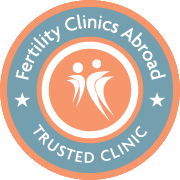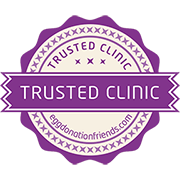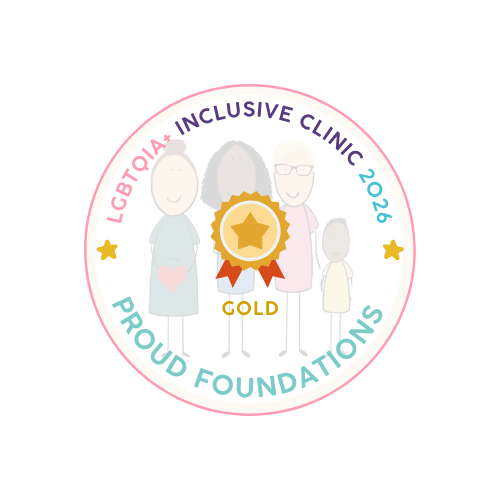Are there any side effects from taking medications during IVF?
by Athanasios Pantelis, last updated 25 Jan 2022,
5 min read
1. What are injectable gonadotropins?
Gonadotropins are drugs that are widely used in assisted reproductive treatment programs, in an injectable form and contain either Follicullar Stimulating Hormone (FSH) on its own or in combination with Luteinizing hormone (LH). During a woman's normal menstrual cycle, both FSH and LH are produced by the pituitary gland of the brain in order to stimulate the ovaries to produce follicles. One dominant follicle continues to grow in size and single follicular ovulation occurs. When FSH (either alone or in combination with LH) is given in an injectable manner to a woman, then, this hormonal stimulation acts directly onto the ovaries resulting in multiple folliculogenesis (the growth of more than one follicle). It is important to note that we do not create new follicles but grow the existing ones.
2. How are these drugs used?
Gonadotropins are widely used in assisted reproduction programs, either for intrauterine inseminations and even more so for IVF cycles. Injectable gonadotropins are applied at the beginning of a woman's menstrual cycle (2nd - 3rd day of the cycle), in order to achieve the development of multiple follicles and therefore harvest more than one egg (oocyte). Human chorionic gonadotropin (hCG), another injectable drug, is then used to finalise the maturation and then induce the release of the eggs (from the follicles). During these therapeutic interventions, the woman undergoes frequent ultrasound examinations by the infertility doctor in order to ensure the normal and symmetrical development of multiple follicles growing and determine the necessary time to perform the transvaginal ultrasound-guided egg collection. This close monitoring eliminates the risks and complications.
3. What are some of the possible side effects of injecting gonadotropins?
Ovarian Hyperstimulation Syndrome (OHSS)
Ovarian hyperstimulation syndrome is a medical condition occurring in women that have taken gonadotropins to stimulate the ovaries. It is characterized by the ovaries being enlarged and accumulation of free fluid in the peritoneal cavity of a woman. A mild form of ovarian hyperstimulation syndrome occurs in 10% to 20% of stimulation cycles and leads to some degree of abdominal discomfort, but usually resolves quickly without any short-term or long-term complications. The severe form of ovarian hyperstimulation syndrome occurs in about 1% of cases of gonadotropin-induced drug stimulations. The possibility of ovarian hyperstimulation is increased in women suffering from polycystic ovary syndrome as well as in those women whose embryo transfer takes place in the same cycle in which the hormonal stimulation has been administered. Ovarian hyperstimulation syndrome in its severe form can cause nausea, vomiting, a feeling of heaviness or pain in the lower abdomen, rapid weight gain, dehydration, renal impairment, increased fluid collection in the abdomen and chest. In severe manifestations of the syndrome, hospitalization is often required for follow-up. The clinical condition of ovarian hyperstimulation syndrome is temporary, usually lasting for one to two weeks of its onset. There are several ways today to prevent or minimize the symptoms of ovarian hyperstimulation syndrome. Inhibition of further injectable gonadotropins (step down protocols or medication costing on the days of stimulation), establishment of antagonist protocol, final maturation of developing follicles with GnRH analogue (final triggering of the follicles) and not with human chorionic gonadotropin, oral administration of cabergoline with the onset of triggering that, have managed in recent years to significantly reduce the incidence of ovarian hyperstimulation syndrome resulting in being characterized like Ovarian Hyperstimulation Syndrome belong to complications of the past. We are proud to say that in our Fertility Clinic after thousands of stimulated cycles over the last 12 years, we have not had severe OHSS syndrome cases, due to the close and individual monitoring of each case.
Multiple pregnancy
Injectable gonadotropins for scheduling timed intercourse or for intrauterine insemination is associated with an increased risk of multiple pregnancies (25% -30% multiple implants), which normally occur in only 1% to 2% in normal conceptions. Multiple pregnancies are considered high-risk pregnancies as women are at a greater risk of miscarriage in the first trimester, preterm labour, infantile abnormalities, as well as developing diabetes, hypertension and bleeding in pregnancy. Because multiple pregnancies are a complication of gonadotropins, in recent years their administration has increasingly been phased out for timed intercourse or intrauterine inseminations. They have been replaced, in recent years, by oral tablets that control the growth of folliculogenesis in a more controlled way, such as clomiphene citrate, letrozole, etc. However, gonadotropin administration continues to be the gold standard in IVF programs as the number of embryos eventually transferred to the woman's uterus is completely controlled and hence we can reduce the multiple pregnancy rate.
Ectopic Pregnancy
While ectopic pregnancies seem to occur in 1% - 2% of the general population and spontaneous conceptions, in gonadotropin-administered cycles the rate of ectopic pregnancies appears to be slightly increased (3%). Ectopic pregnancies can be life threatening and may require medication or surgery.
Ovarian torsion
Ovarian torsion is an extremely rare complication with an incidence of 0.01% - 0.2%. This is an emergency situation in which the entire stimulated ovary after the administration of gonadotropins, with the developing follicles, may rotate - twist around its stem, resulting in the cessation of its blood supply and the clinical manifestation of severe pain. In this case, immediate surgery is required in order for the ovary to return to its correct anatomical position and to restore its blood supply from the arteries. In extremely rare cases, the ovary may even need to be removed.
Gonadotropin administration and carcinogenesis
Although at the beginning of gonadotropin administration in assisted reproductive treatment programs there were fears that controlled stimulation could trigger some malignancy in the future, over the last 25 years of their use no statistically significant rise for a possibly malignancy in the future (either breast or ovarian cancer) has been found. In fact, recent multicenter studies have shown that women who have been asked to receive hormonal stimulation with gonadotropins up to 6 times in their lifetime for some assisted reproductive therapy are at exactly the same statistical risk of developing breast or ovarian cancer as a woman who has never had taken gonadotropins for ovarian stimulation.
Local or generalized reactions
In some women, topical injection of gonadotropins can cause local skin irritation and, more rarely, generalized allergies. Other side effects that have been sporadically described from time to time include breast tenderness, headache, and mood swings.
If you are considering treatment in Greece, please schedule a medical consultaton with our team so we can discuss your individual protocol as we want you to feel comfortable with your decision and fully supported throughout your treatment.

Athanasios Pantelis, MD, PhD
Athanasios is an Infertility Specialist at Newlife IVF Greece. He obtained a PhD degree and graduated from the Medical School of the Aristotle University of Thessaloniki (AUTH).











